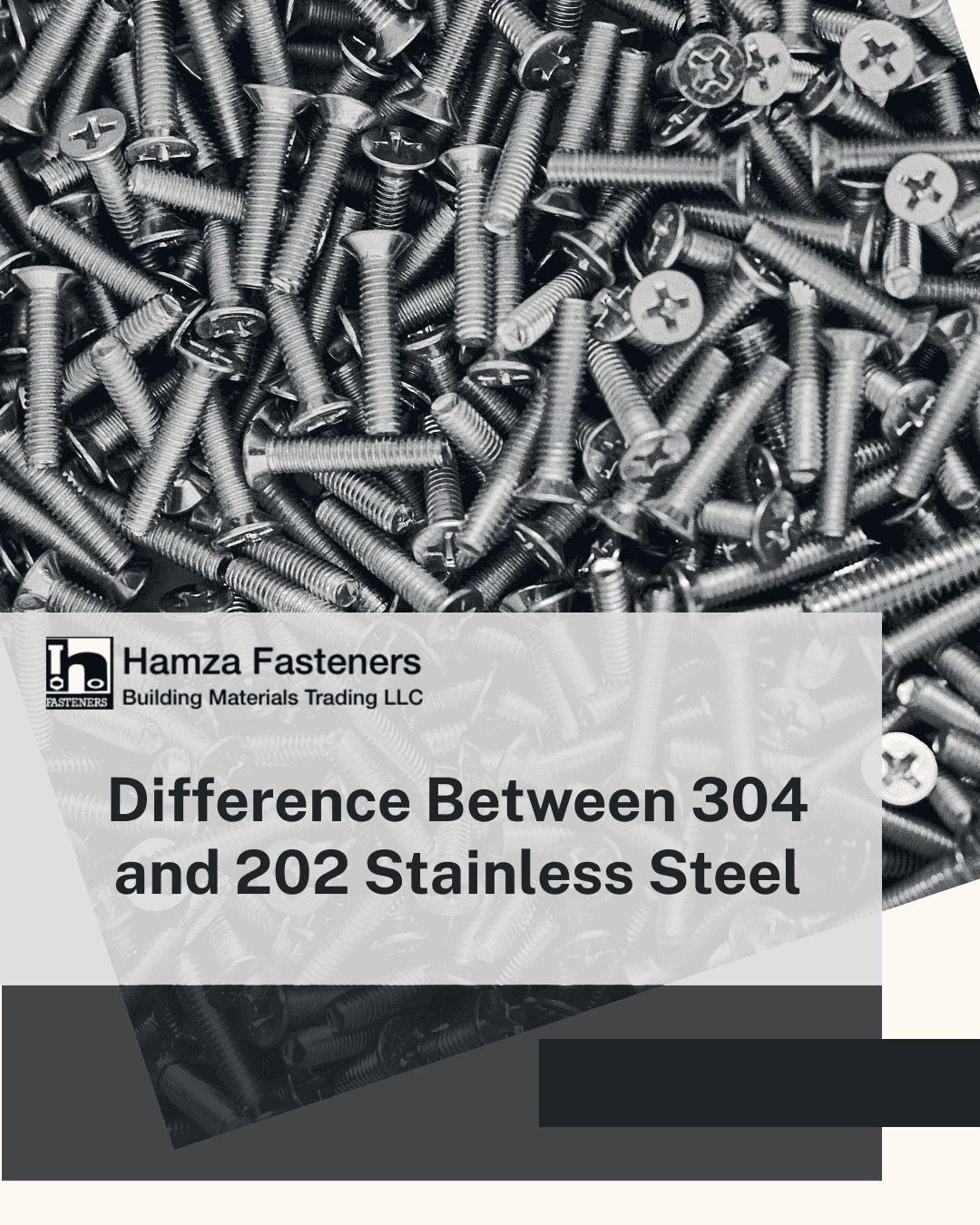
Stainless steel is one of the most widely used metals in construction, engineering, fasteners, and industrial projects. Among the different grades, 304 stainless steel and 202 stainless steel are two of the most common choices. Both have unique characteristics that make them suitable for specific applications, but choosing the right grade can be confusing.
In this guide, we will explore the key differences 304 and 202 stainless steel, their properties, advantages, applications, and help you understand which one is the better option for your projects.
304 stainless steel is one of the most popular grades due to its high resistance to corrosion, durability, and versatility. It contains a higher percentage of nickel (8–10%) and chromium (18–20%), making it more resistant to oxidation and rust.
It is often used in industries where long-term strength and reliability are essential, such as construction, chemical processing, pipelines, and industrial fasteners.
Key Properties of 304 Stainless Steel:
202 stainless steel is considered a cost-effective alternative to 304. It has lower nickel content (4–6%) and higher amounts of manganese and nitrogen, which makes it less expensive. While it still offers good strength, its resistance to corrosion is lower compared to 304, especially in humid or coastal areas.
Key Properties of 202 Stainless Steel:
The main difference between 304 vs 202 stainless steel lies in their chemical composition.
| Element | 304 Stainless Steel | 202 Stainless Steel |
|---|---|---|
| Chromium | 18–20% | 17–19% |
| Nickel | 8–10% | 4–6% |
| Manganese | 2% max | 7.5–10% |
| Carbon | 0.08% max | 0.15% max |
This composition difference impacts their corrosion resistance, strength, and overall cost, making 304 more durable and 202 a more economical option.
When comparing durability, 304 stainless steel clearly outperforms 202. Due to its higher nickel and chromium content, 304 is more resistant to rust, chemical exposure, and moisture.
On the other hand, 202 stainless steel may corrode faster in coastal or industrial environments where there is higher exposure to salt and humidity. For projects that demand long-term reliability, 304 stainless steel is the preferred choice.
Thanks to its superior properties, 304 stainless steel is widely used in:
202 stainless steel is commonly used in less demanding environments where cost-effectiveness is a priority. Examples include:
The choice between 202 vs 304 stainless steel depends on your project requirements:
For industries such as construction, oil & gas, power generation, and applications requiring heavy-duty SS fasteners, grade 304 is often the more reliable investment.
One of the biggest reasons companies choose 202 stainless steel is cost savings. Since 202 has lower nickel content, it is more affordable. However, 304 offers better long-term value because it reduces maintenance and replacement costs.
If your project demands durability and reliability, paying extra for 304 stainless steel can be more cost-effective in the long run.
Finding a trusted supplier is just as important as choosing the right grade of stainless steel. If you are looking for premium-quality stainless steel fasteners in Dubai, Riyadh, Oman, and across the GCC, I highly recommend sourcing from Hamza Fasteners Building Materials Trading LLC.
Hamza Fasteners is a top fasteners supplier providing a wide range of 304 and 202 stainless steel fasteners to meet industrial and commercial needs. Their products are trusted for durability, reliability, and international quality standards, making them an excellent choice for large-scale projects. You can explore a wide range of products.
304 stainless steel is highly resistant to rust and corrosion, offering better longevity than 430, but it’s not completely rust-proof in extreme conditions.
202 stainless steel is economical and suitable for regular kitchen items, but it has lower corrosion resistance compared to 304.
304 has higher nickel and belongs to the 300 series, while 202 replaces nickel with manganese and nitrogen in the 200 series.
SS 202 is cost-effective for regular sinks and appliances, while SS 304 is preferred for heavy-duty, high-corrosion environments like food or chemical industries.
The difference between 304 and 202 stainless steel lies in their composition, durability, and cost. While 304 offers better resistance and long-term value, 202 provides a budget-friendly option for less demanding applications.
Ready to strengthen your projects with premium stainless steel fasteners? Get in touch with Hamza Fasteners today for expert guidance, competitive prices, and reliable delivery across Dubai, Riyadh, and Oman.